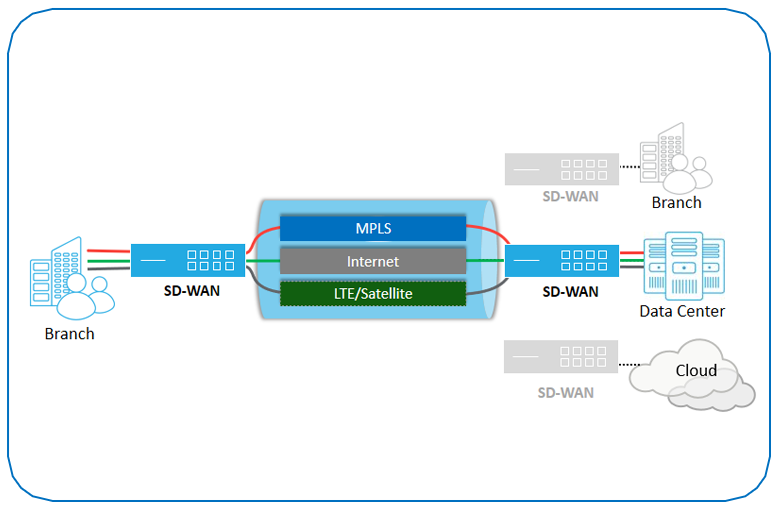SD-WAN

Increasing use of applications by branch users result to a higher wide area network (WAN) bandwidth consumption. How does your business address this challenge?
Today’s businesses continue to advance as more applications and services are accessed by users at the branch. This results to a higher wide area network (WAN) bandwidth consumption which the corporate IT must address. But these demands are complex to cater given the complexity, cost and static architecture inherent to the existing WAN.
Traditional WAN connections are composed of expensive leased lines (private MPLS circuits) or unpredictable Internet connections such as DSL, cable, 4G/LTE. Leased lines typically provide high quality of service, but with the tradeoff of limited capacity, higher cost and long deployment lead times. Broadband provides fast deployments and greater capacity, but with the tradeoff of reliability. It seems that setting up a Hybrid WAN is the solution to address both capacity and reliability concerns but incorporating both private MPLS and broadband Internet, on its own, does not increase agility, performance nor simplicity.

If you are interested in learning more on how our solution works, contact us by filling the form here. We would be glad to go into further detail with your team by having one of our team members reach out!
By clicking “Submit,” you agree to our Privacy Policy and consent to the collection and use of your personal information as described therein.
